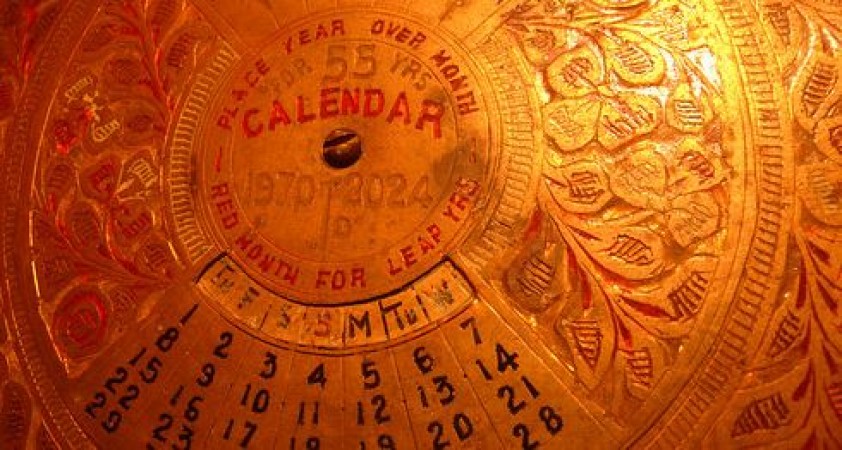
In the annals of human history, ancient civilizations have demonstrated remarkable ingenuity in devising tools to measure time and track celestial events. One such extraordinary artifact is the "Nebra Sky Disk," a mesmerizing bronze disc discovered in Germany, dating back over 3,600 years. This enigmatic object has fascinated archaeologists, historians, and astronomers alike, as it provides significant insights into the astronomical knowledge and spiritual beliefs of our ancient ancestors. Let's embark on a captivating journey to unravel the secrets of the Nebra Sky Disk.
1. Discovery and Description
The Nebra Sky Disk was fortuitously unearthed in 1999 by treasure hunters near the town of Nebra, Saxony-Anhalt, Germany. This celestial marvel, crafted around 1600 BCE, measures about 32 centimeters in diameter and weighs approximately 2.2 kilograms. Its stunning composition comprises gold, tin, and traces of other metals, forming a breathtaking representation of the night sky.
2. The Astronomical Significance
The Nebra Sky Disk's most striking feature is its depiction of celestial bodies, including the Sun, the Moon, and a cluster of stars, assumed to represent the Pleiades. This remarkable alignment is believed to be one of the oldest representations of the cosmos known to humankind. The disk's creators showcased an astonishing understanding of astronomical events, such as solstices and equinoxes, evident from the precise positioning of these celestial elements.
3. Archaeoastronomical Interpretations
Researchers and archaeoastronomers have delved into the various interpretations of the Nebra Sky Disk. Some propose that it was a sophisticated astronomical instrument used to track celestial events, serving as a primitive calendar for agricultural purposes. Others suggest that it held profound religious and symbolic significance, potentially used in rituals and ceremonies to honor deities or mark important dates.
4. Cultural and Historical Context
The context in which the Nebra Sky Disk was created adds another layer of intrigue. It hails from the Bronze Age, a time when human societies were making significant strides in agriculture, technology, and culture. The disk's discovery site also yielded several other significant artifacts, shedding light on the sophisticated civilization that thrived in the region during that era.
5. Preservation and Research Challenges
Preserving ancient artifacts like the Nebra Sky Disk is an ongoing challenge. The disc's exposure to the elements over millennia has led to corrosion and deterioration. To combat this, experts use state-of-the-art preservation techniques to ensure the artifact endures for generations to come. Researchers continue to apply advanced scientific methodologies to extract more knowledge about its creation, purpose, and the people behind its craftsmanship.
6. The Nebra Sky Disk's Influence
The discovery of the Nebra Sky Disk has redefined our understanding of prehistoric cultures and their knowledge of astronomy. It stands as a testament to the intellectual capabilities and the relentless human quest to comprehend the universe. Its influence resonates across different scientific disciplines, inspiring further research into ancient astronomy and archaeology.
The Nebra Sky Disk remains a remarkable testament to the intellectual brilliance and spiritual depth of our ancient ancestors. This extraordinary artifact not only serves as a testament to human curiosity but also offers a tantalizing glimpse into the ancient past. The knowledge it embodies continues to enrich our understanding of ancient civilizations and the enduring fascination with the cosmos.
Kargil Diwas: Shivraj Chouhan Pays Homage to Martyrs at Shaurya Smarak in Bhopal
2 Arrested for Sextortion Call to Union Minister Prahlad Patel